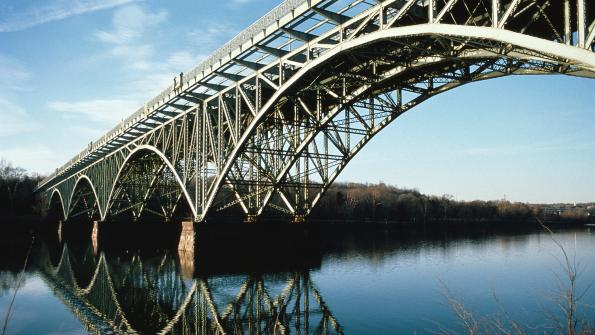Debt in the way of infrastructure spending
Although infrastructure improvements create jobs and bolster economies, the U.S. is lagging in infrastructure spending – spending it desperately needs.
Globally, the U.S. ranks 19th in infrastructure quality, according to the World Economic Forum’s Global Competitiveness Report. The American Society of Civil Engineers, in its 2013 Infrastructure Report Card gave the U.S. a D+, and said all governments at all levels – state, local and federal – will need to invest $3.6 trillion by 2020 to keep infrastructure from crumbling.
Spending on infrastructure continues to lag, even as the economy has shown signs of life over the past years. According to a FiveThirtyEight Economics report, economic experts have long argued that improving infrastructure results in job growth and business investment, but American spending on infrastructure has not kept up with demand.
Writing in the Hartford Courant, John K. Delaney, the representative for Maryland’s 6th Congressional District, explains the problem and the solution.
“The U.S. economy needs large-scale investment in infrastructure to preserve our competitive advantage, and our private sector is looking for a cost-effective way to reinvest in our economy,” he writes. “The best economic outcomes are achieved when government and the private sector work well together. Infrastructure investment offers the perfect opportunity to prove this point.”
But this large-scale investment isn’t occurring. One way to understand infrastructure investment, according to FiveThirtyEight, is by looking at the amount of money governments spend on buildings and large-scale projects. The report found nationwide, public construction spending is just over 1.5 percent of the GDP – the lowest it’s been since 1993. And while public construction does not directly equate with infrastructure investment, the group says, “it’s a fair proxy.”
So why aren’t state and local governments investing? Debt is the biggest reason, according to FiveThirtyEight – the two biggest sources of state and local government debt being pension benefits and borrowed money during the 2008 financial crisis. As a result, these governments have been more focused on paying down debt than on investing in big capital projects.
Florida particularly has been working to pay down its debt. According to the Tampa Bay Times, Gov. Rick Scott has already worked to pay down $3.6 billion, with another $170 million on the way in this year’s budget.
“Florida was in a hole, and for four years, there was just more digging,” Scott said. “Today, all that has changed.”
According to Govalytics data, the three largest MSAs in Florida (Orlando, Miami and Tampa) have budgeted $25,799,757,052 for capital improvement projects, rennovations and replacements in 2013.
MSAs, as defined by the U.S. Census Bureau, are cities and their metro (or micro) areas. “A metro area contains a core urban area of 50,000 or more population, and a micro area contains an urban core of at least 10,000 (but less than 50,000) population.
To learn more about how infrastructure spending can help local economies, click here or here.
_____________
To get connected and stay up-to-date with similar content from American City & County:
Like us on Facebook
Follow us on Twitter
Watch us on Youtube




















